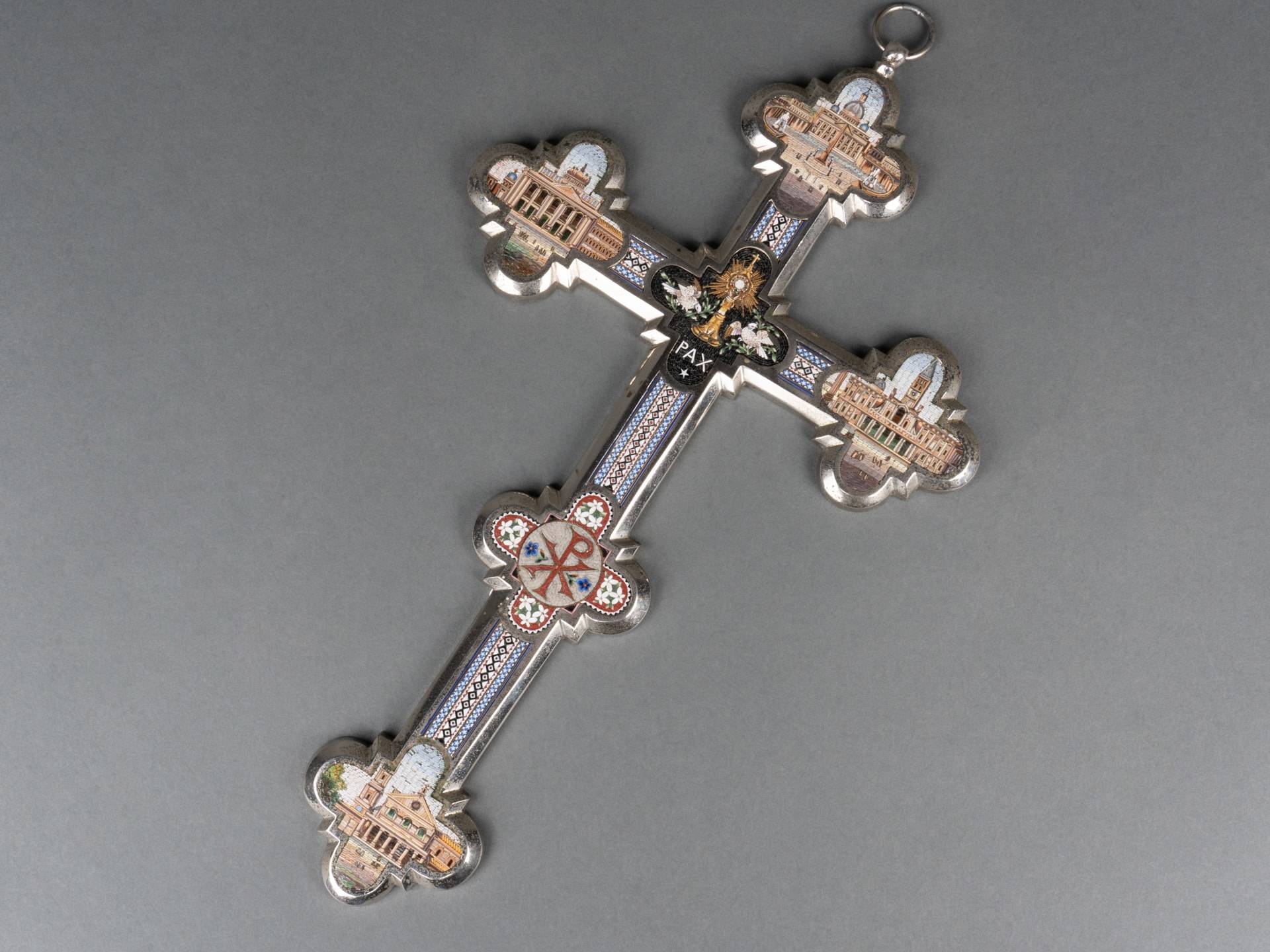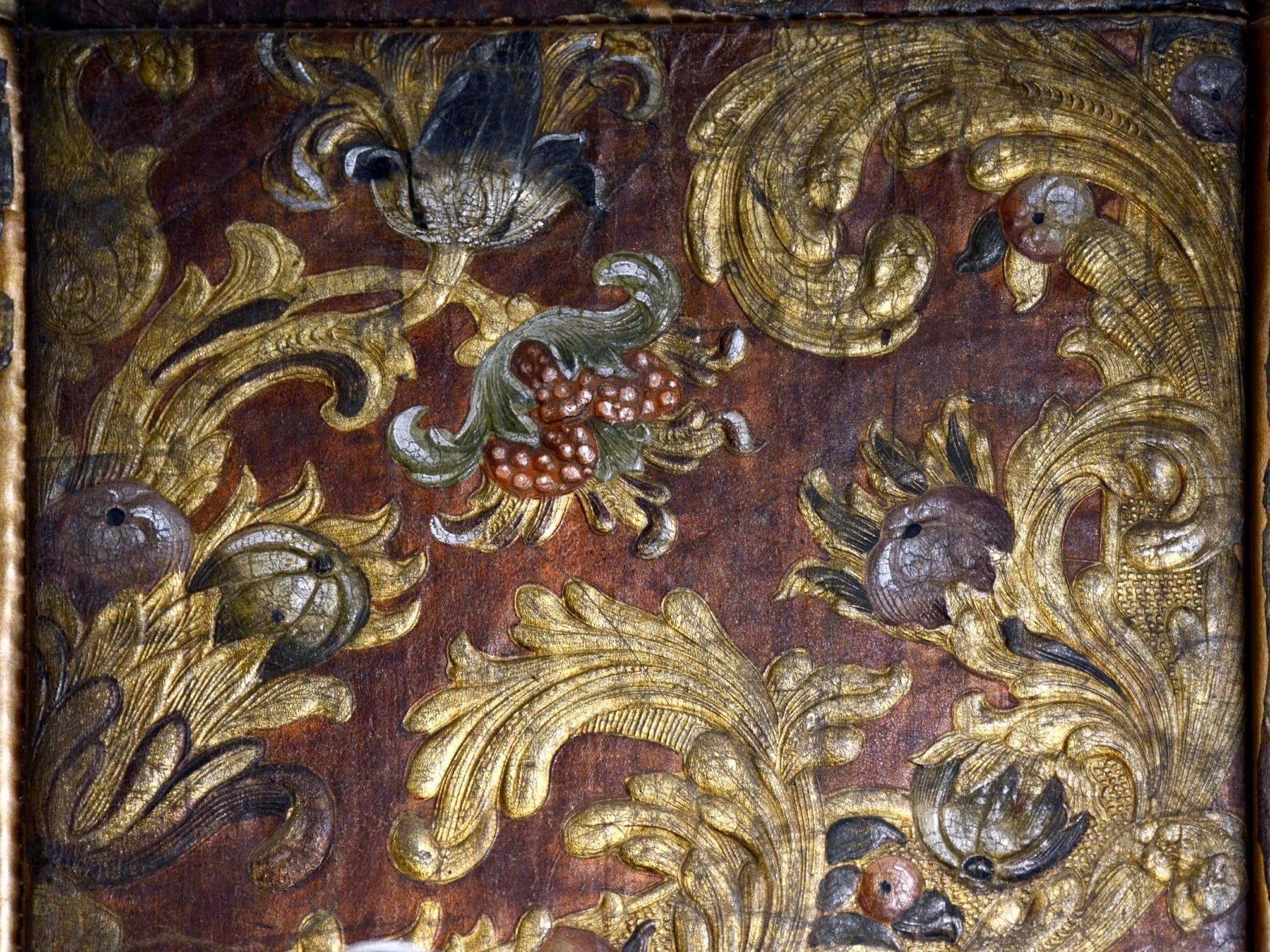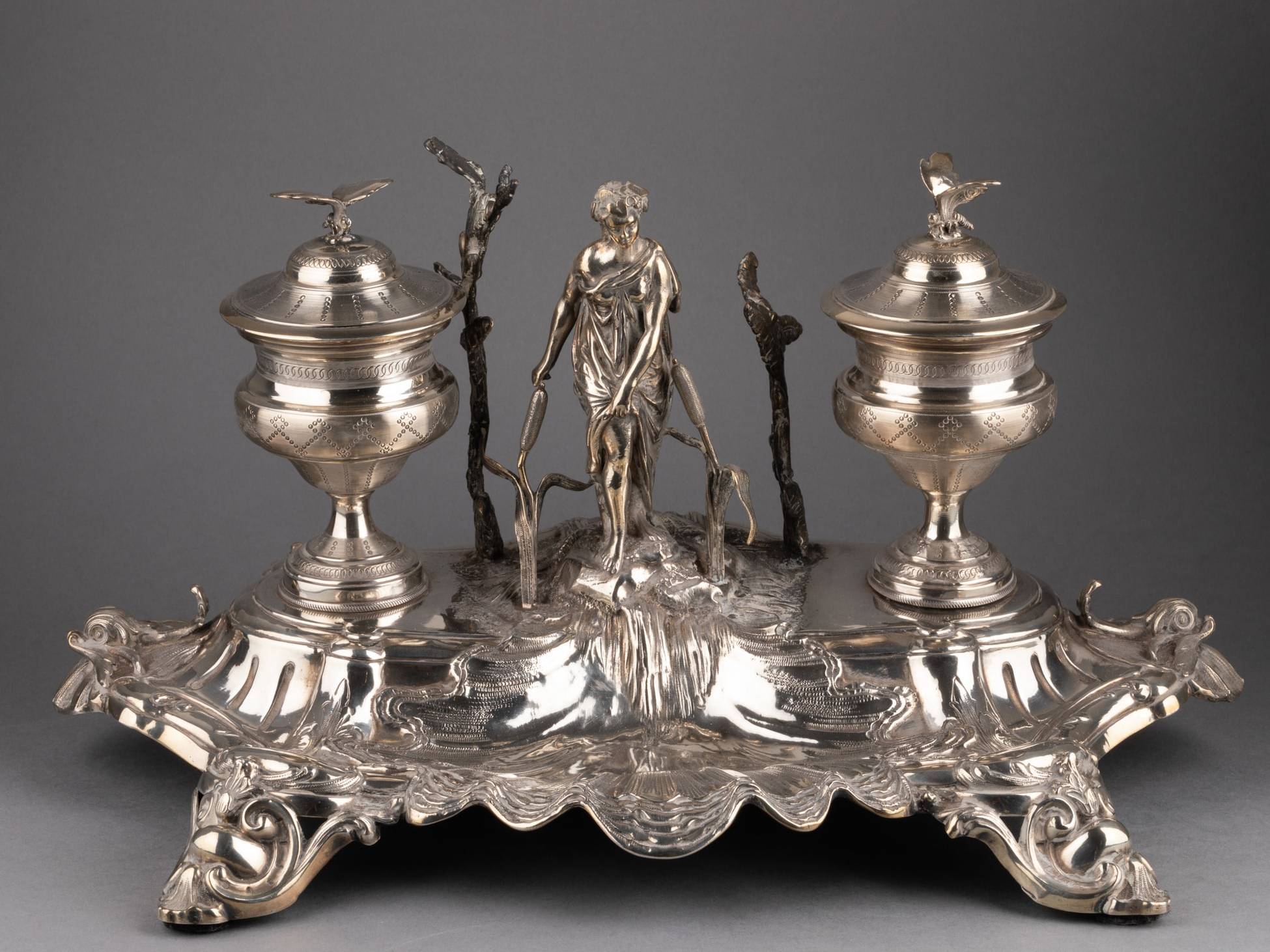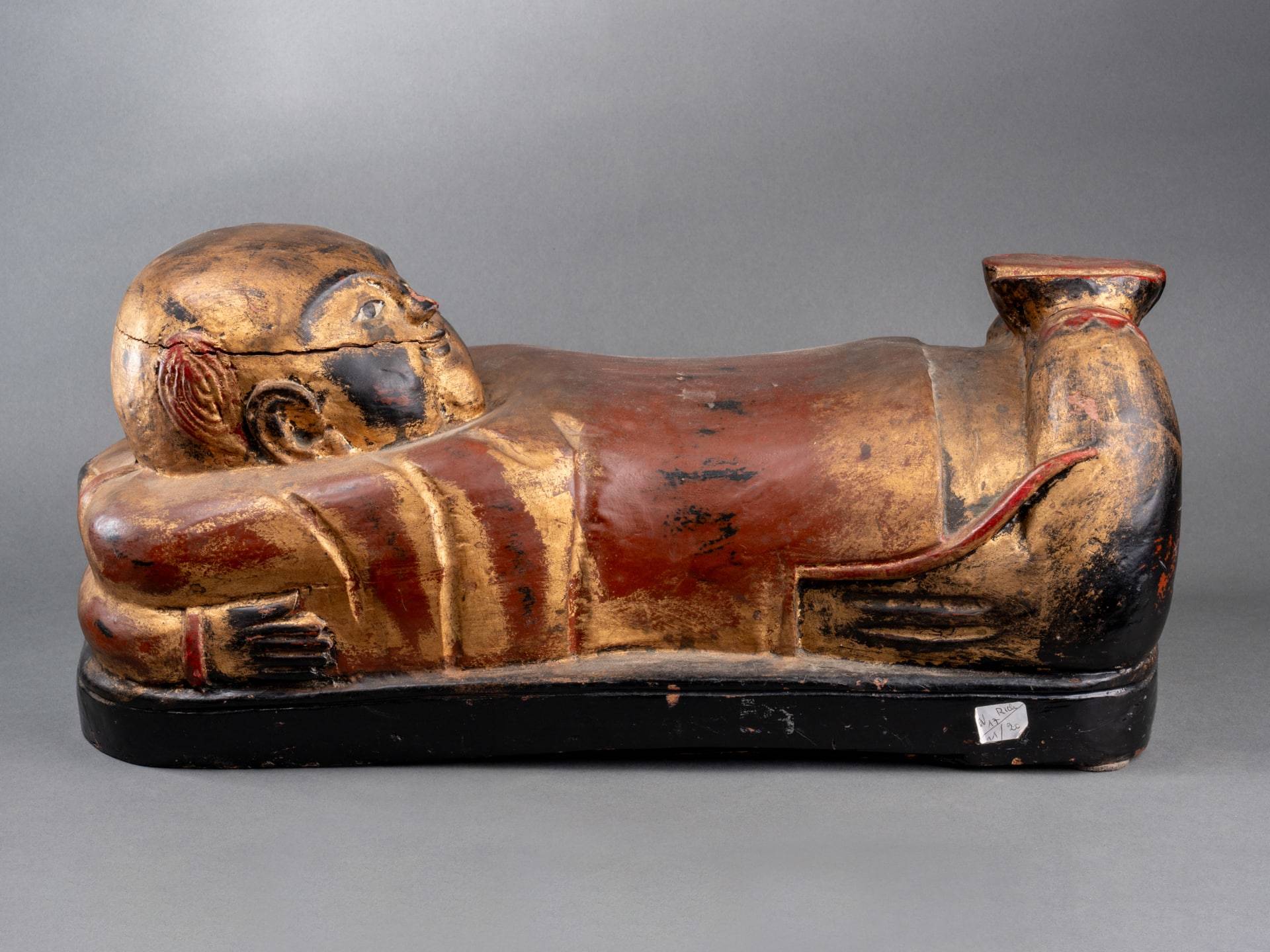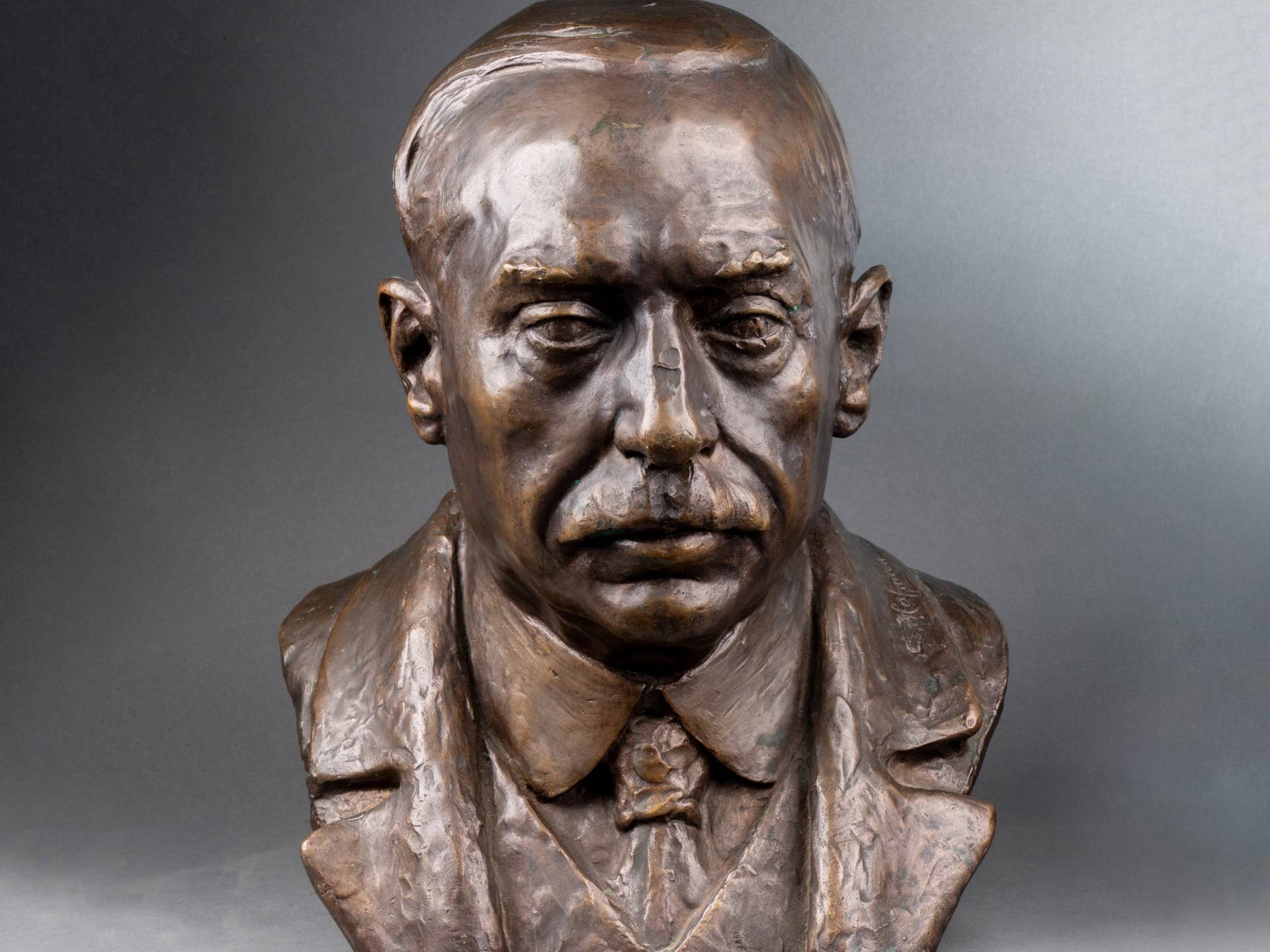Jacob Desmalter (1770-1841), Empire Cabinetmaker
Son of the aptly named Georges Jacob – notoriously one of the figures at the origin of the Louis XVI style – François-Honoré-Georges Jacob-Desmalter (1770–1841) pushed his research towards a neoclassicism close to that of the painter David with whom the cabinetmaker often works. Strengthened by the reputation of his father, Jacob-Desmalter will manage to show his own talent to become the essential cabinetmaker of the Empire. His order books are always full and to acquire a piece by the master you have to be as wealthy as you are patient, although his furniture factory in Paris employs just over 300 employees!
This console that we present has all the characteristics of prestige furniture from the beginning of the 19th century: geometric shape and imposing appearance, luxurious wood species, sober but elegant marble, delicately chiseled and gilded bronzes.
The type of furniture is not insignificant either. While the chest of drawers had known its golden age in the 18th century, the console stole the show at the start of the 19th century. The Empire period swears by it and uses it in all rooms of the house. It punctuates the spaces and marks the symmetry while one no longer gets along with the baroque exuberance of plant forms. Above all, it corresponds to the idea that society has of ancient Greco-Roman furniture: simple, useful, straight and luxurious.
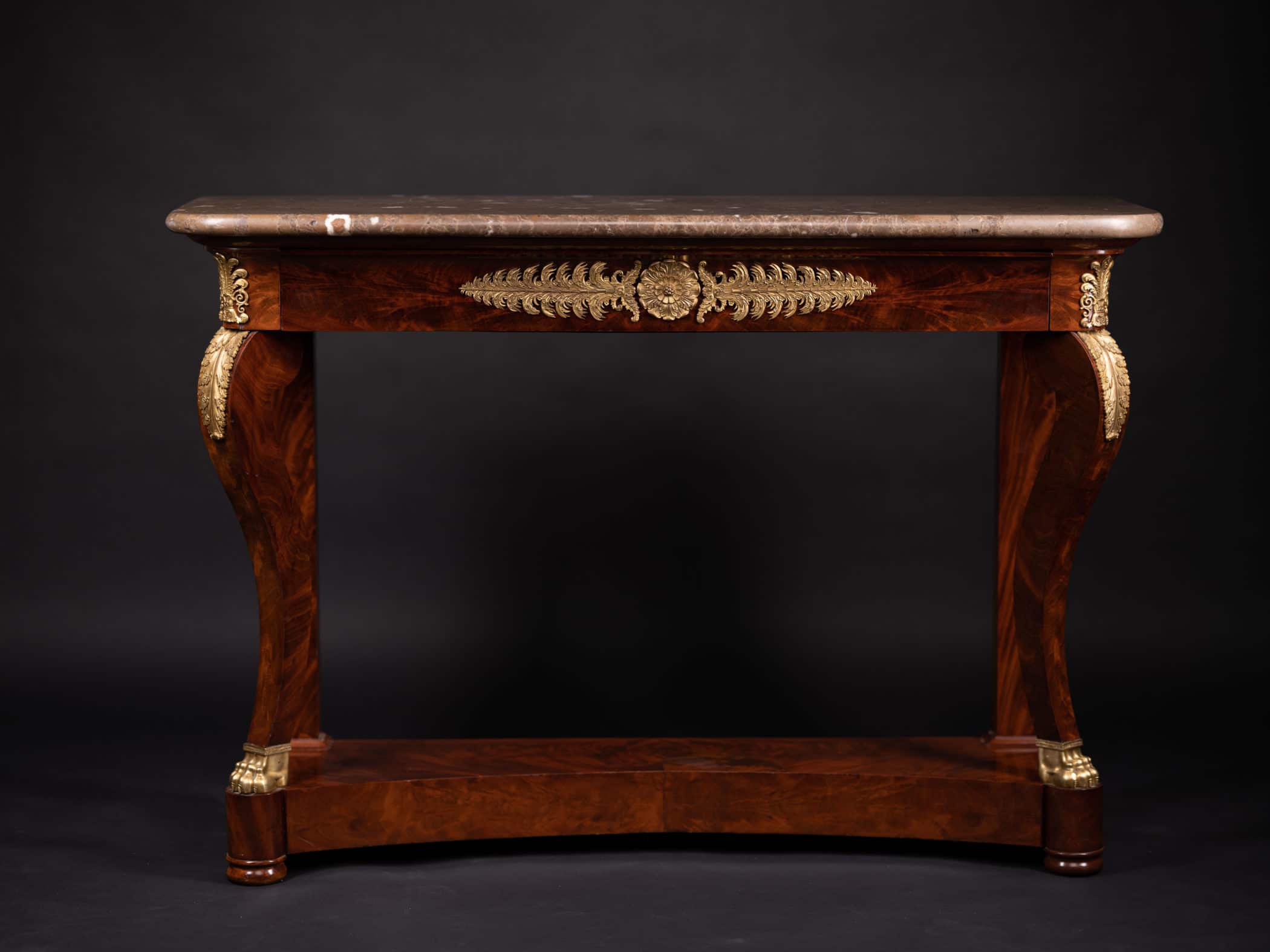
The return from the Egyptian campaign (1798 – 1801) already bears the beginnings of the Empire style. The latter finally imposed itself under the notable impetus of the ornamentalists Charles Percier (1764 – 1838) and Pierre Fontaine (1762 – 1853) whose rich Collection of interior decorations was published in 1801 and was a great success before being reissued in 1812. In this work, numerous engravings of motifs spread the new taste throughout France, highlighting the splendours of the Empire and the new order that must accompany it.
However, this style is ultimately only the natural continuation of the forms adopted by the Louis XVI style at the end of the 18th century. They are then remodeled by the imperial ideal to which the Emperor aspires. References to the Roman Empire are everywhere: bronze in imitation of cameos, laurel wreaths, sphinxes, lions, eagles and swans, palmettes and lyres adorn both prestigious and everyday furniture. Furniture and decorative arts appropriate the colors of ancient Roman domination: imperial purple and gold.

The Empire Console: Emblem of Napoleonic Power
To transcribe this political program into furniture, Jacob-Desmalter works both with ornamentalists and with the painter Jacques-Louis David (1748 – 1825), figurehead of the neoclassical movement in pictorial art. The latter produced drawings and sketches of furniture inspired by the discoveries made at Herculaneum and Pompeii, the excavations of which were then the subject of news stories followed by aristocratic and bourgeois circles in Europe.
The contemporary translation of these ancient forms is in the image of the strong man of power; his ideal of resurrecting the Roman Empire is no secret.
Straight and strict marble top, decorated belt, slightly shouldered base and spacer firmly anchored in the ground, everything is a game of asserted straight lines and discreet curves, enlivened by a shimmering mahogany which is reminiscent of antique purple. The finely chiseled bronzes enliven the surfaces and borrow their motifs from the Roman imperial vocabulary and, more broadly, from Antiquity.
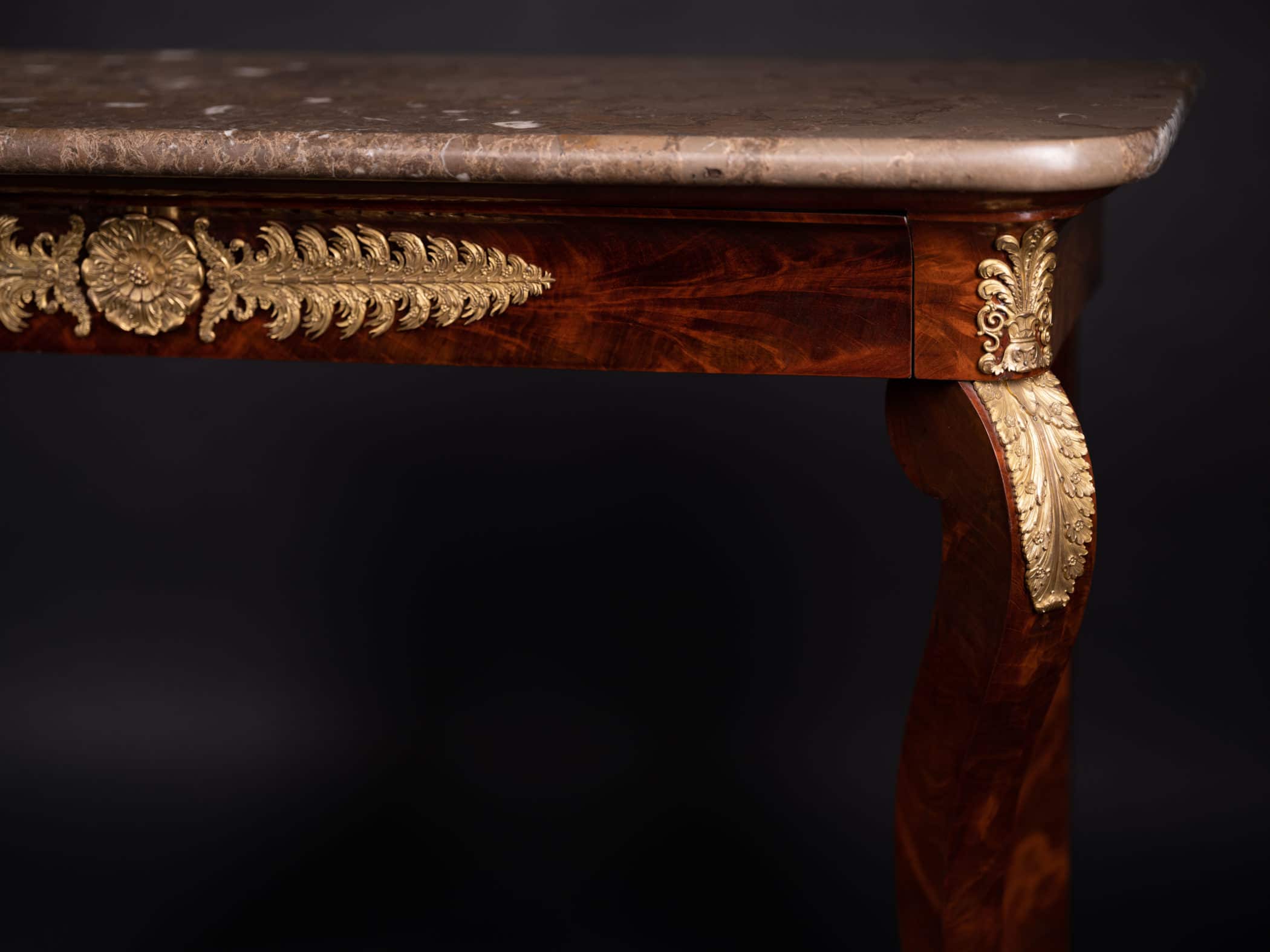
A remarkable point: on this console, the spacer acts as a base. The lion claw feet rest on the spacer where they are raised as on a platform. It is a characteristic of the Empire style that is frequently found in the production of prestigious furniture, in particular in that of Jacob-Desmalter. The spacer no longer serves only the stability of the piece of furniture, it becomes a pedestal, raising the console to better highlight it.
Empire furniture is no longer a whim of the Ancien Régime, which is placed and moved according to fashion. Empire furniture takes over space, anchors itself in the room as if it had always been there and nothing can ever dislodge it.
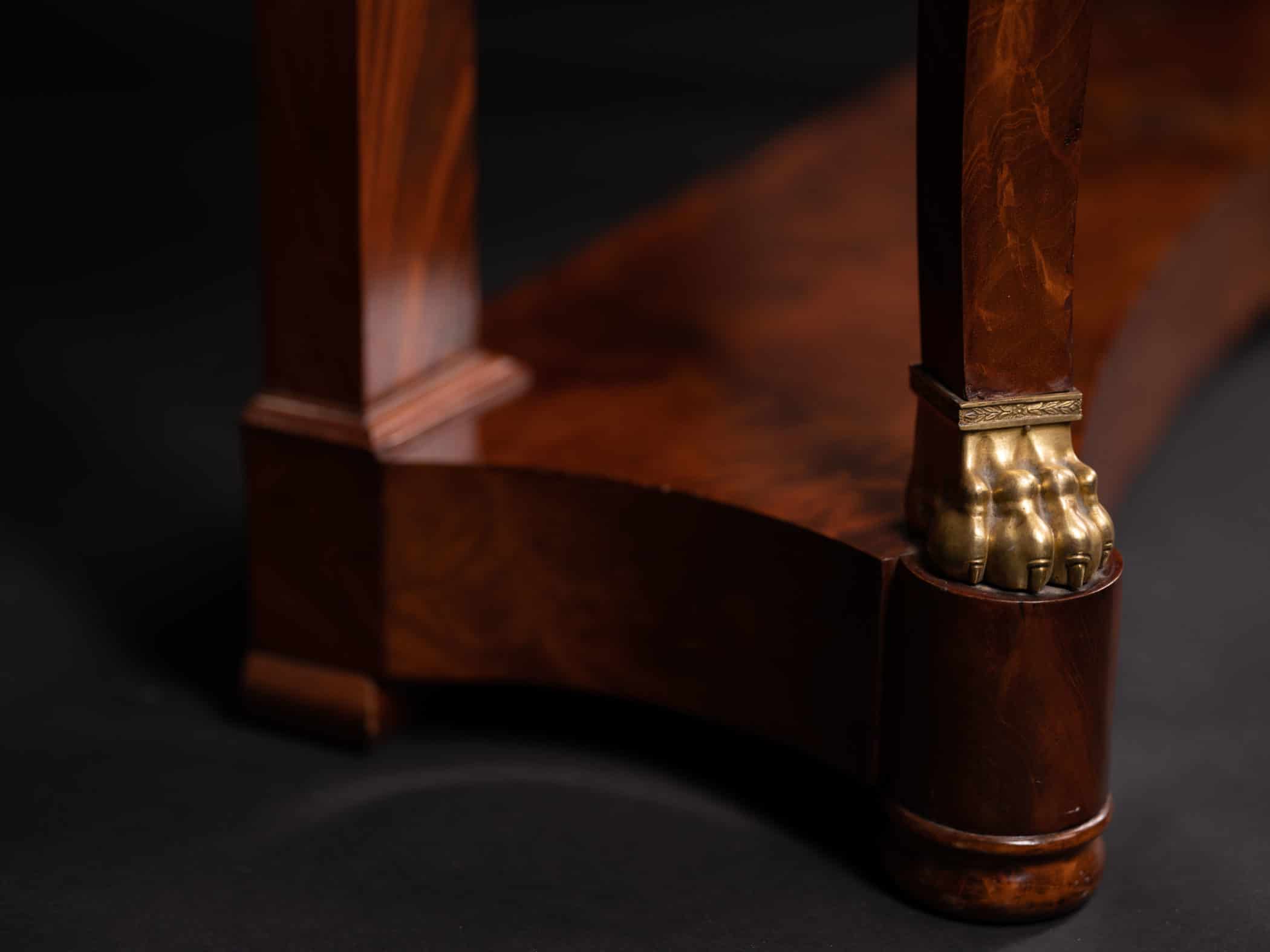
The Gilded Bronzes of the Goldsmith Thomire (1751-1843)
To adorn these consoles, François-Honoré-Georges Jacob-Desmalter collaborated with Pierre-Philippe Thomire (1751-1843) who raised his art to such a level of quality that it would not be surpassed throughout this century. Goldsmith, sculptor and bronzier, he supplied their Imperial and Royal Majesties from 1809. In particular, he signed, still with Jacob-Desmalter, the vermeil cradle of the King of Rome and developed his activity in an almost industrial way; at the height of his career, no less than 700 workers worked for him.
On this console, the bronzes produced by Thomire have a very delicate carving, approaching the meticulousness of lace. The modeling of each piece accommodates the gold leaf without losing any of the finesse of the details. Once fixed, the bronzes perfect the piece of furniture to reveal its strong identity, its silky mahogany and the presence of its lines.

Obviously, the two craftsmen got along wonderfully and this creative agreement made it possible to bring decorative art and furniture to a rare degree of excellence and refinement. Their sustained collaboration thus offered the Empire style its most beautiful pieces. This irreproachably crafted console reveals all the superbness of this admirable combination, never equaled in the 19th century.
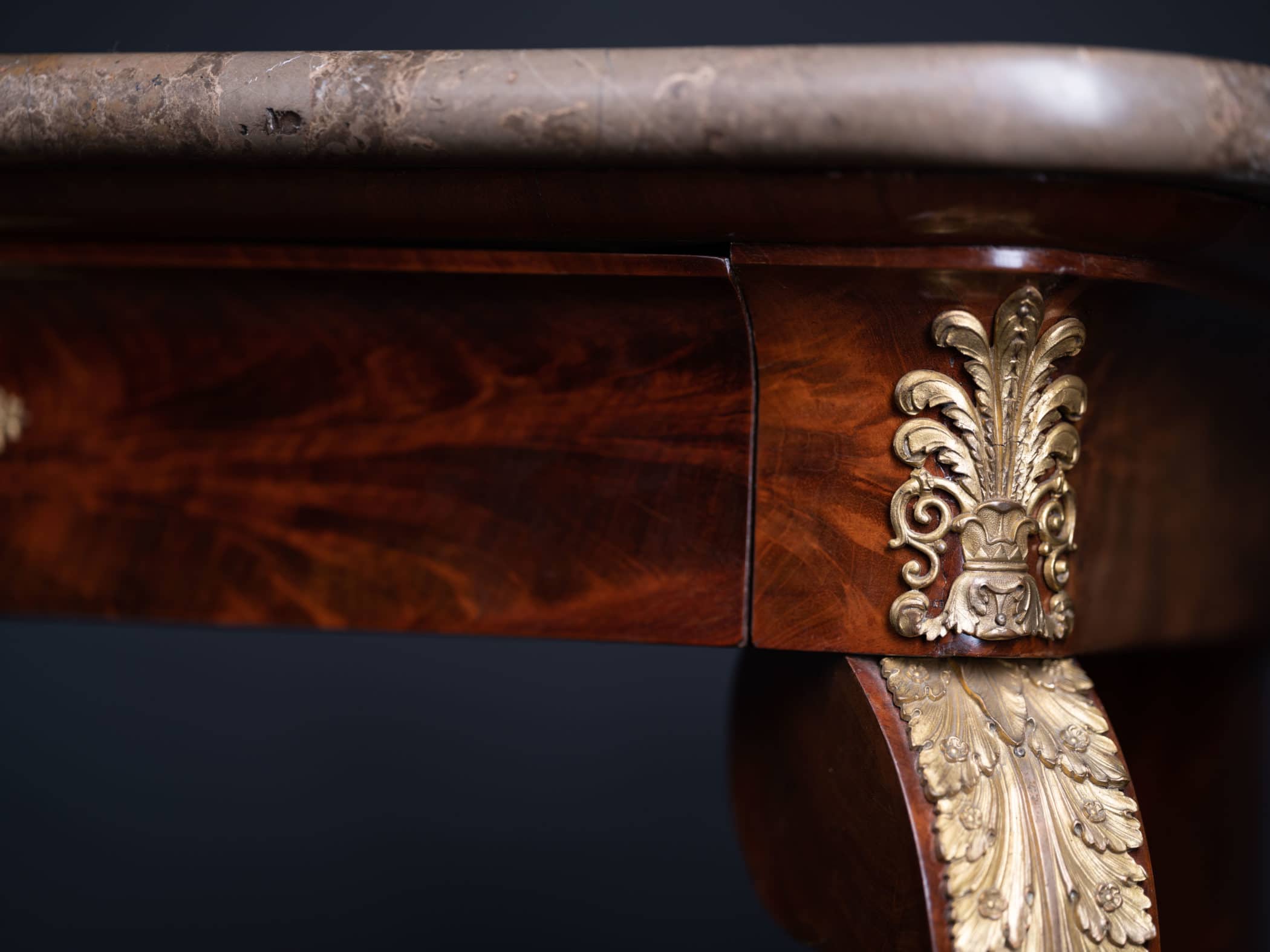
Marielle Brie
Art Historian for Art Market and Cultural Media
Author of the blog Objets d’Art et d’Histoire
Autres ressources et documentations
27 April 2024
Vienna Bronzes
Collectible objects since their creation, Vienna bronzes play the role of accumulation in bourgeois interiors. They are charming manifestations of the social success of their…
29 March 2024
A Micro-mosaic Grand Tour Cross
An emblematic art of the Grand Tour, micro-mosaics rival painting in its most refined productions.
19 March 2024
The Cordoba Leather or Gilded Leather
This famous leather gave its letters of nobility to Spanish production drawing generously on oriental know-how known since Antiquity.
6 February 2024
A Solid Silver Inkwell, 1860 – 1890
This solid silver inkwell is a true sculpture in itself.
4 December 2023
Chinese Opium Den Pillow, 19th Century
A surprising object to our Western eyes, Chinese rigid pillows have long been preferred to their fabric counterparts.
22 November 2023
Georges Clémenceau (1841 – 1929) Bust
A major politician and major cultural figure, Georges Clémenceau encounters both the First World War and the representatives of an art freed from the codes of the Academy.


